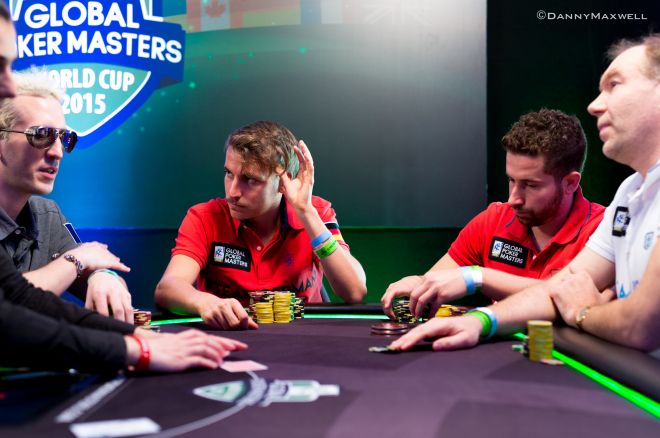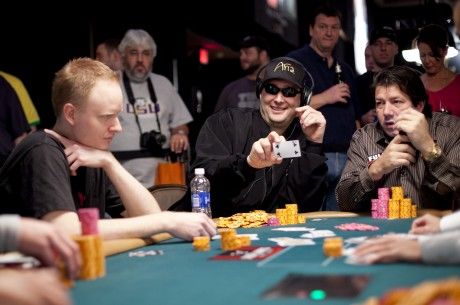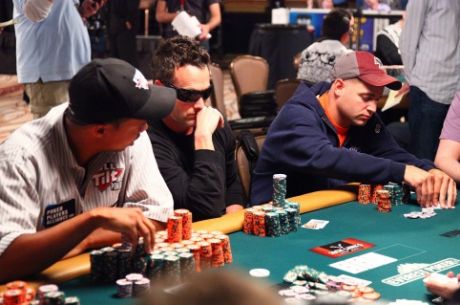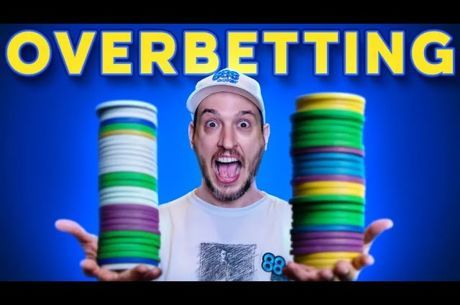Telling a Successful Story With Your Bluffs

You’ve probably heard the phrase before that says something along the lines of “running a successful bluff is all about telling a believable story.”
For the elite pros pictured at right who participated in the recently completed Global Poker Masters in Malta, being able to tell such “stories” is second nature. But for the rest of us — especially beginning players — the advice doesn’t necessarily help to distinguish what separates a believable story from one that’s pure rubbish.
In order to give a better idea what is meant by that recommendation, let’s examine a hand I played during a $1/$2 cash game where an opponent tried to sell me a weak story and we’ll look at exactly what made it weak.
The Hand
During the hand in question, I peeked down at A♠10♠ from middle position and cut out a raise to $10. A very loose player called from the cutoff, then the small blind — whom I had watched dust off about $400 since I sat down — tagged along as well.
We took a flop of 10♣9♦7♥ and the small blind checked to me. I continued out for $15 and both of my opponents called. The turn then brought an interesting card with the 6♥, putting four to an inside straight on the board.
Without any hesitation, the small blind fired out $30 into the pot. It was a bet that truly didn’t make sense to me. I had watched the player in the cutoff float the flop and fold the turn on many occasions, so I opted to put out a raise on this street and clicked it back to $60.
As predicted, the cutoff released his hand. The small blind immediately followed suit and I was pushed the pot.
The Story
Why didn’t I think the small blind’s story made sense? Let’s take a look.
When the small blind came out swinging on the turn, my immediate thought was “Why is he betting here?” As mentioned, fourth street did in fact bring a scare card by putting four to a straight on the board. But for him to lead into two opponents with a made hand in that spot seemed odd to me.
Obviously my opponent was attempting to represent strength. In most cases, I assumed that he would check a straight with the thought that I would continue my aggression or the cutoff would move forward and bet if I checked. So if I were going to rule out the idea of him holding a straight, I had to ponder what other hands would make sense to bet.
Perhaps he held a hand like 7x6x and made two pair? In that case betting here still wouldn’t really make sense, because if either myself or the cutoff had an eight, we would surely raise and that would force him to play a big pot with two pair on a scary board.
With those thoughts in mind, I couldn’t find a story to assign him that made sense on the turn. Betting a straight didn’t make sense, nor did betting two pair. It smelled remarkably fishy. Couple all of this with the fact that I already perceived him as reckless and my only option was to raise.
Keep in mind that despite me having top pair and top kicker at this point — that is, despite my having what was likely the best hand — what I was holding really did not matter. I sensed weakness and pounced on it. Of course, had he come right back over the top of me after I raised, it would have added some validity to the story of strength that he was trying to tell and put me in a totally different position. But that didn’t happen.
The Moral
The lesson to be learned from this is NOT to do what my opponent did in this hand. He led out against two opponents, one of whom (myself) had shown strength on previous streets, in a seemingly random attempt to steal the pot. While he may have lost a relatively small amount with the turn bet of $30, consistent moves like this truly did him in over the course of the session.
Think about the story that you have been “telling” whenever you attempt a bluff. Approach it from not only your own perspective but also from the perspective of your opponents. Perhaps then you’ll find that the timing and believability of your bluffs will increase.
Get all the latest PokerNews updates on your social media outlets. Follow us on Twitter and find us on both Facebook and Google+!








